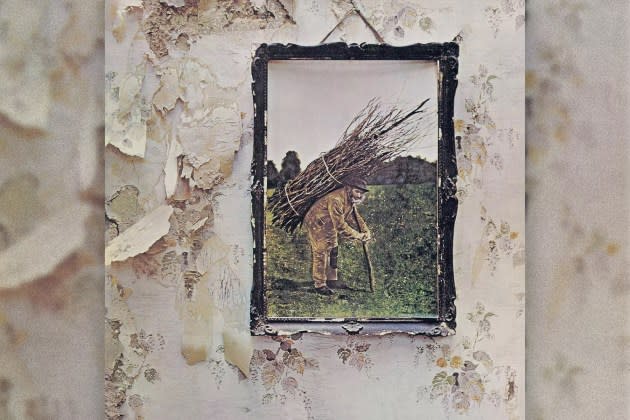Researcher Discovers Identity of ‘Stick Man’ on ‘Led Zeppelin IV’ Cover a Half-Century Later
- Oops!Something went wrong.Please try again later.

A half-century rock mystery has finally been solved as researchers have discovered the identity of the man on the cover of Led Zeppelin’s IV.
As the story goes, singer Robert Plant discovered the photo of the elderly man carrying a bushel of twigs on his back in an antique shop. That photo was then colorized, framed, and placed on the wall of a dilapidated home to create the image that adorns what’s now considered one of the greatest and best-selling albums in rock history.
More from Rolling Stone
Robert Plant Squashes His 16-Year Beef With 'Stairway to Heaven'
One Great Rock Movie Can Change the World: An Oral History of 'School of Rock'
The Japanese Kimono Salesman Dedicating His Life to Being Jimmy Page
However, the actual identity of the man on the 1971 LP remained unknown for 52 years until University of the West of England researcher (and Led Zeppelin fan) Brian Edwards — working on another project — found the same picture in a photo album titled “Reminiscences of a visit to Shaftesbury. Whitsuntide 1892. A present to Auntie from Ernest,” featuring the work of photographer Ernest Howard Farmer, the BBC reported.
“I instantly recognized the man with the sticks – he’s often called the stick man,” Edwards to BBC Radio.
The caption on Farmer’s photo merely said the man was a “Wiltshire thatcher,” but additional research of the area uncovered that the man’s name was Lot Long (or Longyear), a widower in Mere and who died in 1893, just a year after the photograph was taken. Long was approximately 70 years old at the time of the photograph.
“Led Zeppelin created the soundtrack that has accompanied me since my teenage years, so I really hope the discovery of this Victorian photograph pleases and entertains Robert [Plant], Jimmy [Page] and John Paul [Jones],” Edwards told the Guardian.
Farmer, the photographer, died in 1944, decades before his image would feature on IV. Before his death, he became the first head of the school of photography at Regent Street Polytechnic. Following the discovery of the photo album, the Wiltshire Museum will house an exhibit of Farmer’s work, including the original photo of Long.
“Through the exhibition, we will show how Farmer captured the spirit of people, villages, and landscapes of Wiltshire and Dorset that were so much of a contrast to his life in London,” David Dawson, the director of Wiltshire Museum, said. “It is fascinating to see how this theme of rural and urban contrasts was developed by Led Zeppelin and became the focus for this iconic album cover 70 years later.”
Best of Rolling Stone
